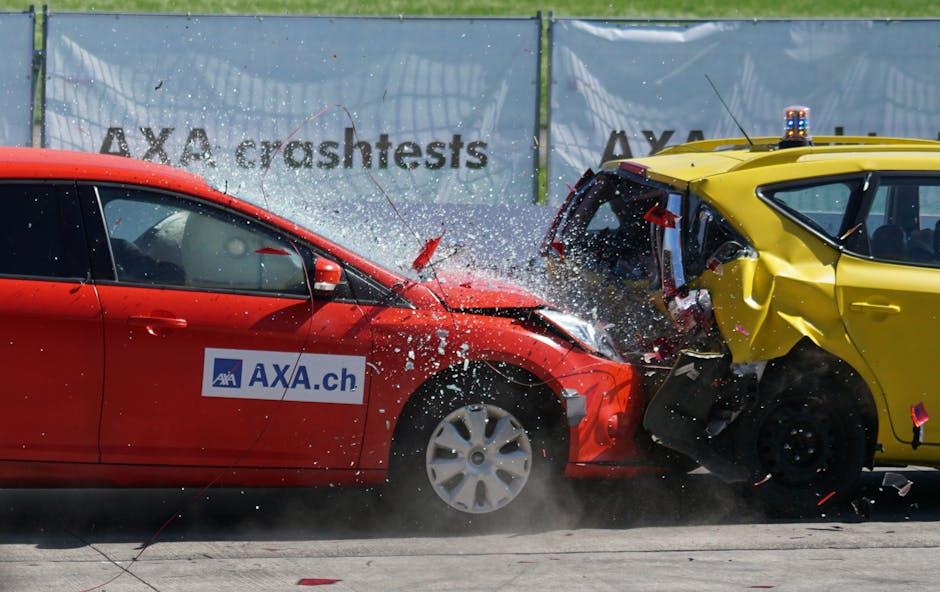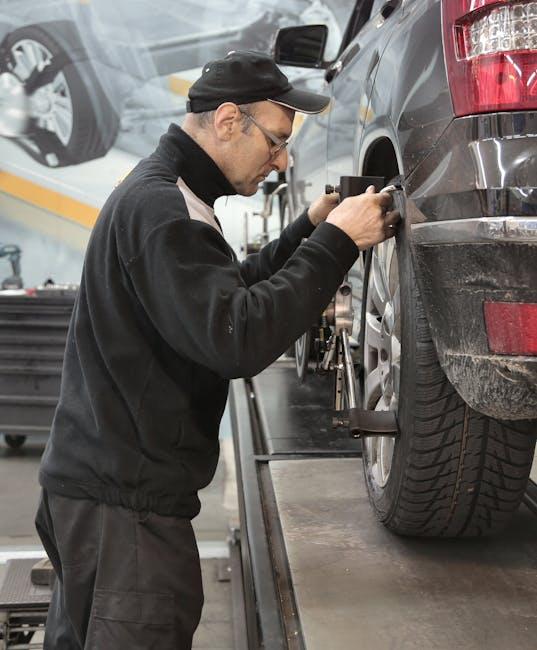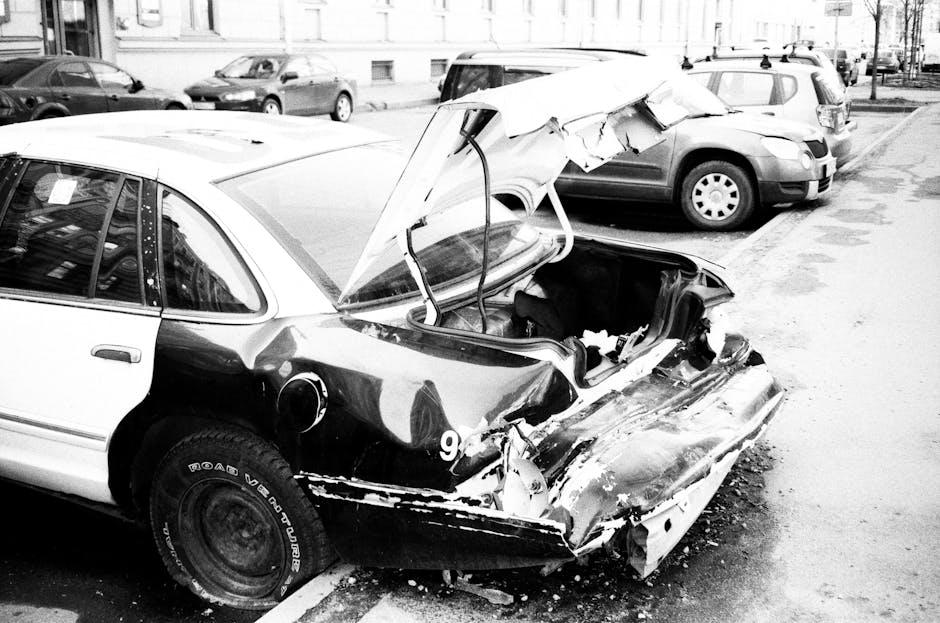When metal meets metal or steel collides with steel, the aftermath often extends far beyond the visible dents and shattered glass. Car accidents, even those that seem minor, carry consequences that ripple through the very framework of a vehicle—most notably, its alignment. While many drivers fixate on bodywork repairs or airbag replacements, the subtle shift in a car’s alignment can silently undermine safety, handling, and tire longevity. Understanding how collisions disrupt alignment sheds light on an often-overlooked facet of automotive care, revealing why post-accident inspections are essential long after the crash scene has cleared.
Table of Contents
- Understanding the Impact of Collisions on Vehicle Alignment
- Common Alignment Issues Triggered by Car Accidents
- How Misalignment Affects Your Car’s Performance and Safety
- Diagnostic Techniques to Detect Post-Accident Alignment Problems
- Effective Repair Strategies to Restore Proper Alignment
- Tips for Preventing Alignment Damage After an Accident
- Q&A
- In Summary

Understanding the Impact of Collisions on Vehicle Alignment
When a vehicle experiences a collision, the forces exerted can easily push its wheels, suspension, and steering components out of their original positions. This misalignment may not always be visible to the naked eye, yet it has profound consequences on driving dynamics and tire wear. Typically, even a seemingly minor impact can disturb the delicate balance of angles that keep your car’s wheels pointing in the right direction. Over time, this leads to uneven tire wear, reduced fuel efficiency, and compromised handling, increasing the risk of further damage or accidents.
Understanding the specific effects of collisions on vehicle alignment involves recognizing key issues that may arise afterward. These include:
- Camber Angle Distortion: When wheels lean inward or outward beyond factory specifications, causing uneven tire wear.
- Toe Misalignment: Wheels pointing inward or outward relative to the vehicle’s centerline, resulting in instability and pulling to one side.
- Caster Angle Shifts: Changes affecting steering returnability and directional stability.
| Alignment Aspect | Potential Collision Impact | Driving Effect |
|---|---|---|
| Camber | Wheel tilt adjustment | Uneven tire contact and wear |
| Toe | Inward/outward wheel deviation | Vehicle pulling and tire scrubbing |
| Caster | Shaft angle change | Reduced steering stability |

Common Alignment Issues Triggered by Car Accidents
Impact from a car accident can lead to a variety of alignment problems that often go unnoticed until they start affecting vehicle performance or tire wear. Common issues include toe misalignment, where the tires point inward or outward, causing uneven tire wear and pulling to one side while driving. Another frequent problem is camber distortion, where the wheels tilt more towards or away from the vehicle, impacting stability and cornering ability. Rear-end collisions might also compromise the caster angle, making steering feel unstable or heavy.
These disturbances can be further understood through key symptoms drivers might experience post-accident:
- Steering wheel vibration or shaking during motion
- Uneven or rapid tire tread wear
- Vehicle pulling to one side without steering input
- Noisy or rough ride quality
| Alignment Issue | Common Cause | Impact |
|---|---|---|
| Toe | Side impact collision | Uneven tire wear, drifting |
| Camber | Collision with curb or pothole post-accident | Handling issues, instability |
| Caster | Rear-end crash | Steering difficulty, poor control |

How Misalignment Affects Your Car’s Performance and Safety
When your vehicle’s wheels are out of alignment, the effects ripple across both performance and safety, often in ways that aren’t immediately obvious. Misalignment can cause uneven tire wear, leading to premature replacements and increased costs. Additionally, your car may pull to one side, forcing you to constantly correct the steering, which can be exhausting and distracting during long drives. The suspension system also suffers uneven stress, potentially shortening its lifespan and diminishing ride comfort. These seemingly minor issues add up to a compromised driving experience that can escalate into more serious mechanical problems if left unaddressed.
Misalignment impacts safety in several key ways:
- Reduced handling and steering responsiveness, especially during emergency maneuvers
- Increased risk of tire blowouts due to uneven tread patterns
- Compromised braking efficiency as tires fail to maintain optimal road contact
- Higher likelihood of losing control on wet or slippery surfaces
| Symptom | Impact on Safety | Recommended Action |
|---|---|---|
| Uneven Tire Wear | Increased puncture risk | Realign wheels, replace worn tires |
| Vehicle Pulling | Reduced steering control | Alignment and steering inspection |
| Steering Wheel Vibration | Driver fatigue, impaired response | Check suspension and alignment |

Diagnostic Techniques to Detect Post-Accident Alignment Problems
After a collision, pinpointing alignment issues involves more than just a visual inspection. Technicians employ a variety of advanced diagnostic tools to unravel hidden distortions. One popular method is the computerized wheel alignment system, which uses sensors on each wheel to measure angles like camber, caster, and toe with remarkable precision. These devices compare the readings to manufacturer specifications, identifying deviations that could cause uneven tire wear or handling problems. Additionally, some shops use laser-guided systems that add a higher level of accuracy by projecting alignment beams, helping mechanics detect subtle frame bends or suspension damage.
Besides technology-driven diagnostics, several manual checks remain essential. Mechanics often rely on:
- Visual inspection for bent components or damaged suspension parts.
- Steering response assessment by test driving or wheel turn tests.
- Tire wear pattern analysis to notice irregularities that signal misalignment.
| Technique | Purpose | Outcome |
|---|---|---|
| Computerized Wheel Alignment | Measure precise wheel angles | Exact angle correction |
| Laser-Guided Inspection | Detect frame or suspension damage | Identify hidden bends |
| Physical Tire Inspection | Analyze wear patterns | Show signs of misalignment |
Through this blend of high-tech equipment and experienced manual evaluation, repair shops ensure alignment problems from accidents are detected early, preserving vehicle safety and performance.

Effective Repair Strategies to Restore Proper Alignment
Accident-induced alignment issues require a meticulous approach to restore a vehicle’s optimal handling and safety. One effective method begins with a comprehensive inspection that evaluates the suspension components, steering geometry, and tire condition. This process ensures that any bent or damaged parts, such as control arms or tie rods, are identified and replaced or repaired before realignment attempts. Ignoring such underlying damages can lead to recurring alignment problems, uneven tire wear, and compromised vehicle control.
Once the vehicle is mechanically sound, technicians use precision alignment tools to recalibrate the angles of the wheels — including camber, caster, and toe — back to manufacturer specifications. This is often supplemented by a test drive to ensure the adjustments translate into smooth steering response and improved stability. Key benefits of following these repair strategies include:
- Extended tire lifespan by preventing uneven wear patterns.
- Improved fuel efficiency due to reduced rolling resistance.
- Optimized safety through better vehicle control and reduced steering effort.
| Repair Step | Purpose | Outcome |
|---|---|---|
| Damage Assessment | Identify bent/broken components | Prevent repeated misalignment |
| Component Repair/Replacement | Restore structural integrity | Maintain correct wheel positioning |
| Precision Realignment | Adjust wheel angles | Enhance handling and tire wear |
| Test Drive | Confirm performance improvements | Ensure driver safety and comfort |

Tips for Preventing Alignment Damage After an Accident
Following a collision, the first step to protect your vehicle’s alignment is to get a comprehensive inspection as soon as possible. Even minor impacts can shift suspension components or deform the frame, so relying on a quick look might miss critical issues. Be sure to visit a trusted mechanic who can check not only the obvious but also underlying parts such as tie rods, control arms, and wheel bearings. Early detection helps prevent uneven tire wear and steering problems that could turn costly down the road.
Maintaining proper alignment post-accident isn’t just about immediate fixes; it’s an ongoing process. Incorporate these practices into your care routine to safeguard your drive quality and safety:
- Drive cautiously during the first few weeks after repairs to allow components to settle properly.
- Monitor tire wear patterns regularly, as uneven wear can be an early sign of misalignment.
- Avoid potholes and rough roads to prevent further suspension damage.
- Re-check alignment after 1,000 miles to confirm that adjustments hold steady.
| Maintenance Step | Recommended Interval | Key Benefit |
|---|---|---|
| Post-accident inspection | Within 48 hours | Early problem detection |
| Alignment check | After 1,000 miles | Ensures proper settling |
| Tire wear monitoring | Monthly | Prevents uneven damage |
| Avoid rough terrain | Ongoing | Protects suspension parts |
Q&A
Q&A: How Car Accidents Affect Alignment
Q1: What is wheel alignment and why is it important?
A: Wheel alignment refers to the adjustment of a vehicle’s suspension—the system that connects a car to its wheels. Proper alignment ensures that the tires point in the right direction, leading to optimal handling, tire longevity, and fuel efficiency. When wheels aren’t aligned correctly, it can cause uneven tire wear, poor vehicle control, and a less comfortable ride.
Q2: How can a car accident impact wheel alignment?
A: Even minor collisions can disrupt the precise angles at which the wheels are set. The jarring force from impacts, especially on the front or side of a vehicle, can bend suspension components, misalign steering parts, or knock the wheels out of their original position. This misalignment often leads to a noticeable pull to one side while driving or uneven tire wear.
Q3: Are all car accidents likely to affect alignment?
A: Not necessarily. The severity and location of the impact matter greatly. A low-speed fender bender might not cause significant alignment issues, whereas a moderate to high-speed collision—especially if it hits the front end or wheels directly—is more prone to damage alignment. However, even small impacts warrant an inspection to rule out hidden problems.
Q4: What signs indicate that a car’s alignment may have been compromised after an accident?
A: Common symptoms include the vehicle pulling to one side, uneven or rapid tire wear, a crooked steering wheel when driving straight, and vibrations or thumping noises from the wheels. If any of these signs appear post-accident, it’s time for a professional alignment check.
Q5: How is alignment repaired after a car accident?
A: A certified mechanic or alignment specialist uses alignment machines to measure and adjust the angles of the wheels—caster, camber, and toe—back to factory specifications. If suspension parts are bent or damaged, they will need to be replaced to restore proper alignment and ensure safe handling.
Q6: Can ignoring alignment issues after an accident cause further damage?
A: Absolutely. Driving with misaligned wheels can accelerate tire wear, harm suspension components, reduce fuel efficiency, and compromise vehicle safety. Over time, it can lead to costly repairs and increase the risk of accidents due to poor handling.
Q7: Should alignment checks be part of post-accident inspections?
A: Yes. A thorough post-accident inspection should always include an alignment check, especially if the impact involved the wheels, suspension, or steering areas. Early detection and correction of alignment problems help maintain vehicle safety and performance.
This Q&A offers a clear understanding of how car accidents influence wheel alignment, emphasizing the importance of inspection and repair to ensure safe driving conditions.
In Summary
In the intricate dance of metal and motion, even a brief collision can send shockwaves through your vehicle’s alignment, subtly shifting the harmony that keeps your ride smooth and safe. Understanding how car accidents affect alignment is more than a matter of mechanics—it’s about preserving control, comfort, and confidence every time you take the wheel. So next time the unexpected happens, remember that restoring your car’s alignment isn’t just a repair; it’s a reset button for your journey ahead.
